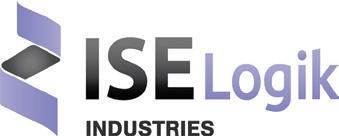
5 minute read
Sometimes Better is Best: Introducing Engage Inception — Flooring from Metroflor
SHOWIN’ OUR STUFF Sometimes Better is Best
Introducing Engage Inception™: High-Performance SPC Flooring from Metroflor
Advertisement
Engage Inception SPC expands Metroflor’s portfolio of flooring solutions in all categories: glue down; floating platforms such as solid vinyl Clic and Attraxion Magnetic Attachment Technology; and multilayer WPC and SPC. For the retailer, it provides a two-pronged “Better/Best” strategy for a multilayer waterproof flooring solution at different price points for a wide range of applications.
Engage Inception is the first SPC product in the world for which Declare Labels have been published, along with Health Product Declarations (HPDs). It is an entry-level multilayer flooring product ideal for Multifamily, Residential and Commercial environments, depending upon the wear layer chosen. Originally designed for the builder market, it provides a lower-cost alternative to WPC.
Stiffer, denser, and heavier than WPC, Engage Inception SPC enables greater resistance to temperature changes and
indentations. Beyond improved dent resistance, the premium attached HDPE (High-Density Polyethylene) foam underlayment provides sound absorption, reduces transmitted sound and

foot fatigue, and helps conceal minor subfloor imperfections. The DropLock 100 ™ locking system enables fast, easy, glueless drop-and-lock installation and a tight fit. The 100% waterproof floor is suitable for traditionally wet areas such as bathrooms, laundry rooms, kitchens, and basements.
Engage Inception is offered in 7" × 48" and 9"× 60" plank formats and a 12" × 24" tile format with up to a 4.2 mm core, coupled with the 1.0 mm HDPE underlayment and wear layers of 6-mil, 8-mil,12-mil, and 20-mil. The robust overall gauge up to 5.2 mm is thicker than many SPCs on the market.
High Performance, High Style
All Engage Inception plank products feature Accent Bevel edge, In-Register and overall embossing. From entry level 6-mil to premium line of 20-mil, Engage Inception offers the widest range SPC flooring options for the widest range of applications from single-family residential to multi-family to commercial available from a single source.❚
SHOWIN’ OUR STUFF Rigid core luxury vinyl flooring SPC vs. WPC—What’s the difference?
Stone Plastic Composite (SPC) and Wood Plastic Composite (WPC) are very similar, except for what composes their core layer. SPC features a core that is made from limestone and plastic or polymer. The WPC core is made from plastic composites and recycled wood pulp. What does that mean to the customer?
Comfort
If your customer is looking for complete comfort, then WPC would be the choice. With a thicker core, it feels cushioned and more stable when walked on. The thickness of the
WPC planks runs between 5.5 through 8 mm. SPC floors run from 3.2 to 7 mm. The core thickness also keeps the floors warmer as it provides additional insulation. Sound Insulation
For sound insulation, the thicker the core the better, hence
WPC floors would be the recommendation as well. When walking on WPC floors, it’s quieter as the core absorbs the sound. Durability
It is easy to think that if the core is thicker, the better the durability, hence WPC would win out here as well. However,
the durability is related to density not thickness, so SPC floors would be the choice here. These floors are much denser resulting in being better at damage-resistant from heavy weights or any type of impact. Stability — Temperature and Moisture
Both floors can be used in rooms with temperature fluctuations and moisture exposure. However, if there are extreme temperature fluctuations, or if there is direct sunlight hitting the floors, SPC offers superior performance and won’t fade in the sunlight. This goes back to the SPC denser core enabling higher resistance to contracting and expanding. Price
The slightly more affordable floor is SPC. However, depending on the requirements, this should not be an issue for those needing WPC. ❚

Déjà New with Attraxion by Metroflor— a unique niche product for the DIY market
Not sold in Big Box stores — only for Specialty Flooring Retailers
This is all about replaceability. Easy for the retailers. Easy for the consumer. One person can do the job.
● Much faster installation with no real skill required: Consumers just roll out the magnetic underlayment and lay down the planks or tiles over it. They just have to make sure the flooring is perpendicular to the underlayment and overlap the seams with at least 6 inches of flooring.
● No expensive specialty tools needed: Just a chalk line, straight edge and utility knife. It can be walked on right away; and furniture moved back with no curing/downtime.
● Benefits for homeowner usage: If there’s a flood, it can be pulled up, dried and reinstalled. If there’s a spill, the magnetic properties push the liquid to the seams and can be cleaned up without penetrating the subfloor or lingering underneath the floor. f it’s damaged or gouged, it’s easily replaced.
● Easily changed with new décor: The underlayment keeps its magnetic charge indefinitely. As an example, primary accent colors for a child’s room are fine until they get older. Easily replace those primary hues with a color scheme that is more mature. The installation design can grow as your children do without having to replace the entire floor. ❚



TO THE TOP
We stop moisture migration from reaching the surface flooring.

Our topical MVEC 710 ™ Moisture Vapor Emission Control is an effective 1-part system that eliminates moisture testing and cures in just 8 hours. Check out our complete line of topical coatings.

We are the flooring industry’s #1 specialist in vapor mitigation science for new slab construction or floor renovation over existing concrete. No one is more knowledgeable and more dedicated to stopping moisture vapor in its tracks than we are. Get to know us at ISElogik.com (877) 549-5159. PremierFlooring Retailer | Digital 2 2020 51 Concrete science for moisture mitigation.










